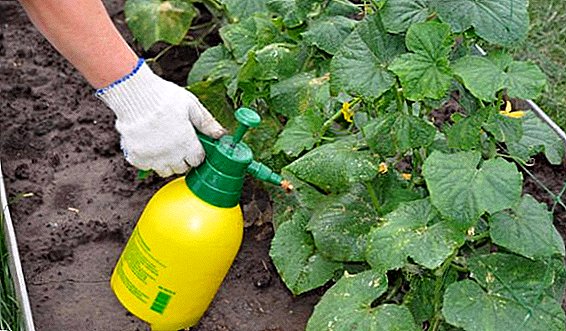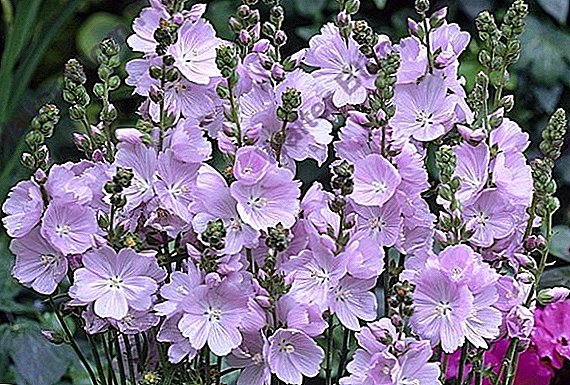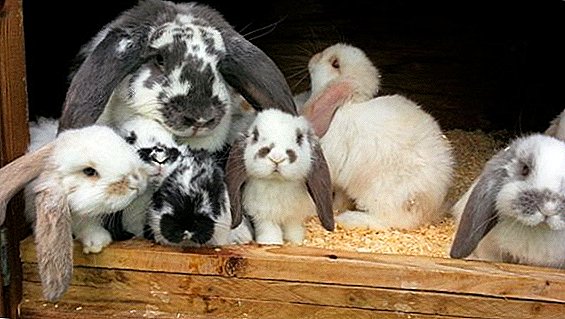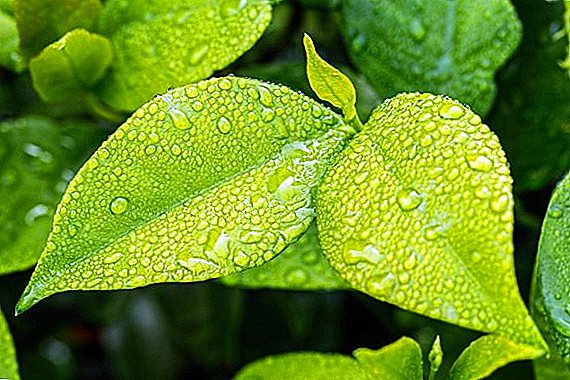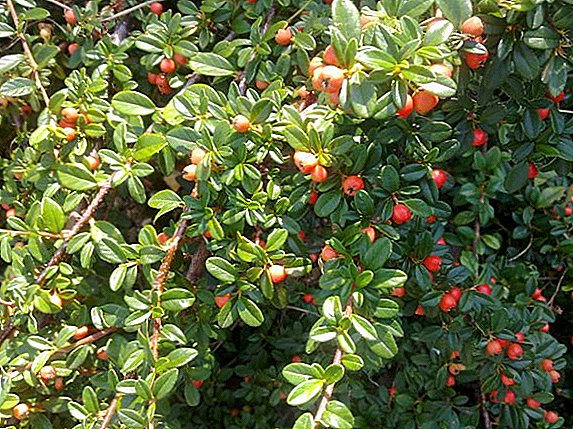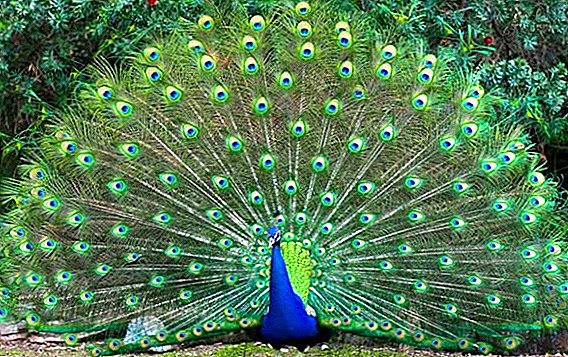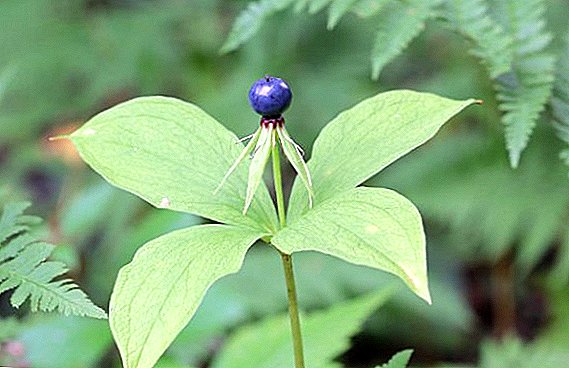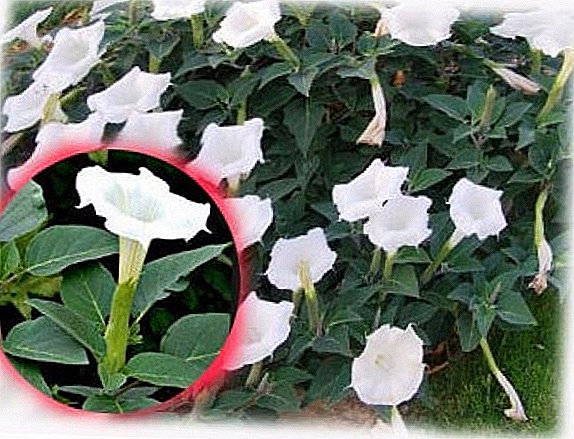 Datura is a single and perennial plant. It is used to decorate the main entrances, flower beds, flower beds. There are such types as Datura ordinary, Indian, Meteloides, Indian. They all differ in the height of the stems and the color of the buds. Datura is widely used in medicine. On the basis of its seeds produce psychotropic drugs. We propose to consider the varieties of Datura, which are most often used in gardening.
Datura is a single and perennial plant. It is used to decorate the main entrances, flower beds, flower beds. There are such types as Datura ordinary, Indian, Meteloides, Indian. They all differ in the height of the stems and the color of the buds. Datura is widely used in medicine. On the basis of its seeds produce psychotropic drugs. We propose to consider the varieties of Datura, which are most often used in gardening.
Datur grown in single and group plantings. Thanks to its powerful bushes, the flower looks good in mixborders. Indian datur grown in a pot can be a great decoration of the main entrance. The most common among gardeners is the dope ordinary.
Did you know? Some animals are not affected by the dope.
Datura ordinary: description and popular varieties
 Datura ordinary is also called smelly, and the description of the plant can be started with its flowers. They have a strong heady smell. Buds are large, white elongated, corrugated, in the form of a pipe. Stems erect, branched, up to 120 centimeters. Bottom of the stems bare. The leaves are whole with jagged edges. The height of the buds is 7-10 cm. The fruits of the dope are round, green with long spikes. Inside the seed box are flat black grains. Datura varieties vary in color buds.
Datura ordinary is also called smelly, and the description of the plant can be started with its flowers. They have a strong heady smell. Buds are large, white elongated, corrugated, in the form of a pipe. Stems erect, branched, up to 120 centimeters. Bottom of the stems bare. The leaves are whole with jagged edges. The height of the buds is 7-10 cm. The fruits of the dope are round, green with long spikes. Inside the seed box are flat black grains. Datura varieties vary in color buds.
The most popular varieties of datura ordinary:
- Tatula - flowers lilac-blue;
- Inermis - this variety is distinguished by the absence of spines on the seed boxes.
Important! If you are poisoned by datura, you need to immediately induce vomiting.
Description and varieties of Indian dope
This name of the plant was due to the wide distribution of Indian tribes living in Central and South America. The Indian dope is an annual with a height of 0.7 to 2.0 m. Datury stems are forked, with empty purple color inside. The leaves of the flower are large, egg-shaped, up to 15 cm long, light green, with distinct veins and smooth edges. Stems and leaves hairy datura. Flowers tubular single, large, reach 20 cm in length, the diameter of the flower is about 10-12 cm. The flowers are located on the branches of the stem and directed upwards. The color of the flowers is snow white with a violet cup. The fruits of the plant are round, similar to chestnuts, inside the seed box there are small grains of bright yellow color. In contrast to the fragrant heady smell of flowers, when damaged, the stems and leaves smell like spoiled peanut butter. 
Did you know? Seeds of Indian dope are used for the production of psychotropic drugs.
Datura blooms for two days. In the evening, the bud blossoms, exuding its unforgettable scent, and the next day the dope's flowers wither. There are various types of dope herbs. Very often, the Indian dope is confused with the dope Meteloides. Indian datura is presented in the form of a single variety La Fleur Lilac.
The characteristics of the Indian dope
Datura also has such species as Meteloides and Indian. Indian dope is an annual. Plant height from 60 to 120 cm. Datura stems bare, woody bottom, dark green or purple color. The leaves are long, egg-shaped, with even slightly wavy edges.  Sheet plate asymmetric. Flowers solitary, looking up, white, yellow, purple, lilac, red color. Indian datura buds are terry and regular, about 20 cm long. The fruits of a yellow datura are arranged in a round seed box of a brown gray-green color.
Sheet plate asymmetric. Flowers solitary, looking up, white, yellow, purple, lilac, red color. Indian datura buds are terry and regular, about 20 cm long. The fruits of a yellow datura are arranged in a round seed box of a brown gray-green color.
Important! All parts of the plant are very poisonous.Indian Datura has four of the most common varieties for cultivation. Their difference lies in the bud color:
- Datura metel Fastuosa (dark purple flowers);
- Datura metel Chlorantha (yellow double pipes);
- Datura metel Coerulea (blue flowers);
- Datura metel Atrocarmina.
Also popular among gardeners are such varieties:
- Flore Pleno (buds are red, terry, with a white spot);
- cold-resistant datur Ballerina Yellow (buds thick, double, yellow);
- Ballerina Purple (red semi-double flowers of datura with a white stripe on the edge of the bud).
 In the homeland of the plant, the local population, knowing which varieties of datura they use, makes various tinctures for external use from them, and also, using datura seeds and tobacco, prepare smoking mixtures. Experimenting in this way is not recommended on its own, as it is unsafe for health and can be fatal.
In the homeland of the plant, the local population, knowing which varieties of datura they use, makes various tinctures for external use from them, and also, using datura seeds and tobacco, prepare smoking mixtures. Experimenting in this way is not recommended on its own, as it is unsafe for health and can be fatal.To the question whether all the datura varieties are narcotic, one can safely answer that the whole datura, without exception, has a hallucinogenic effect on the human body.


